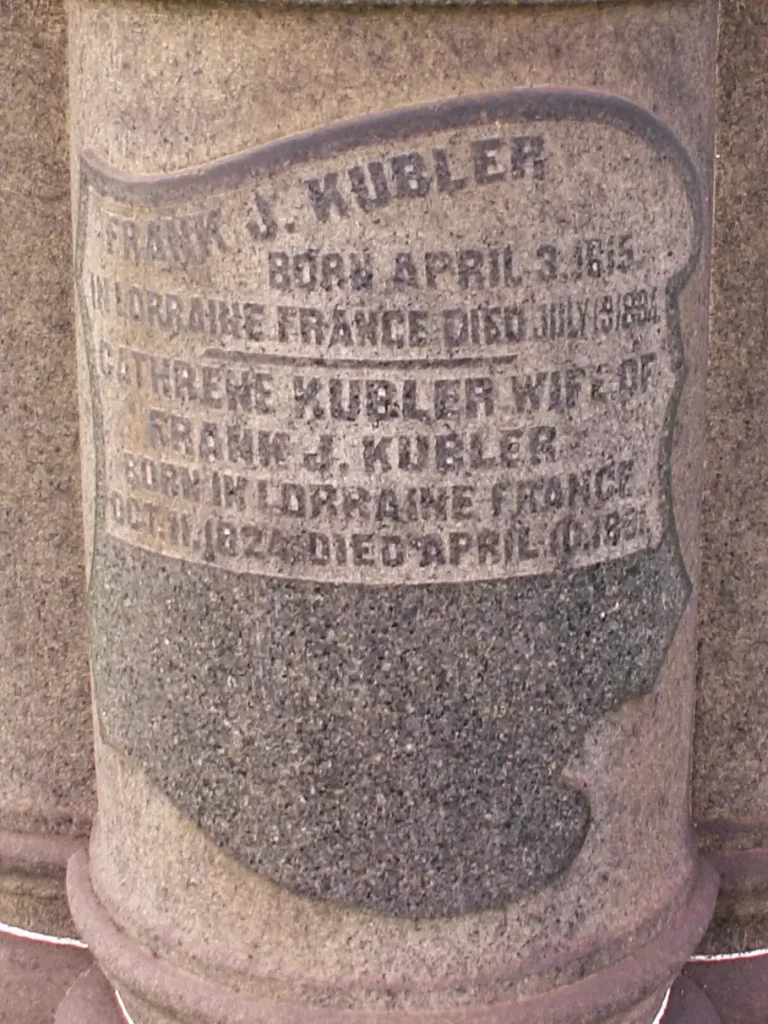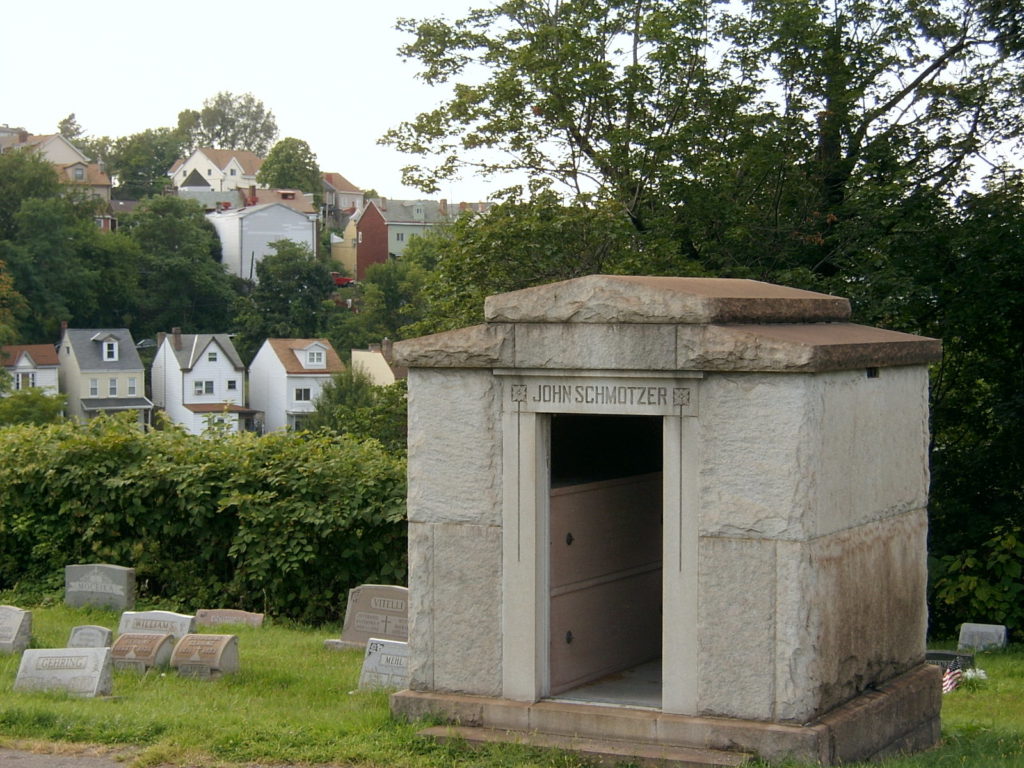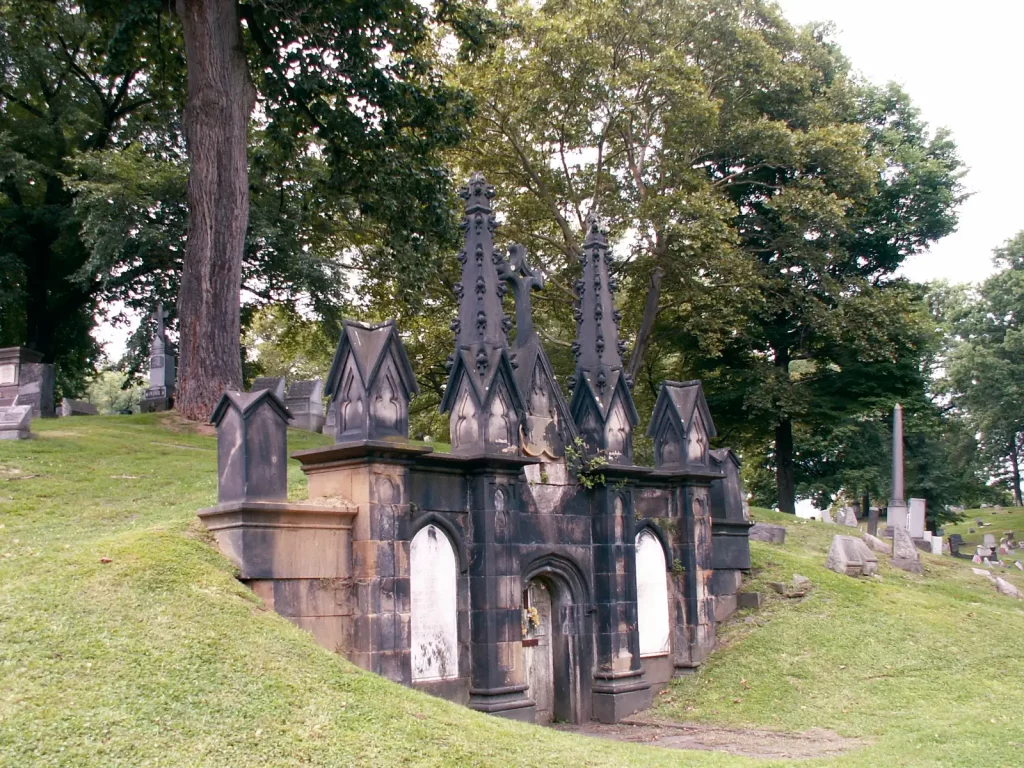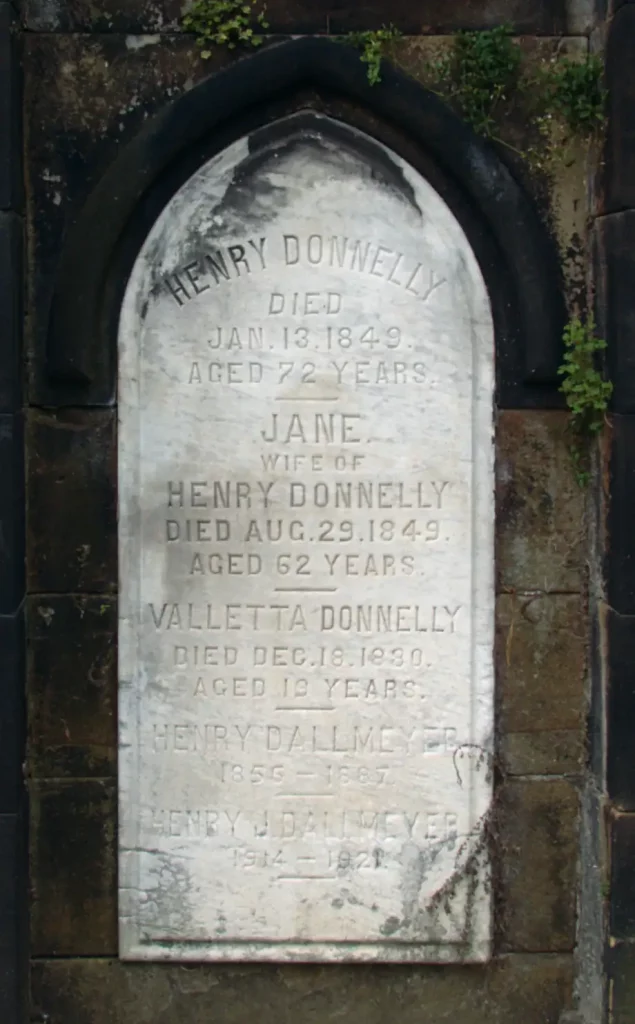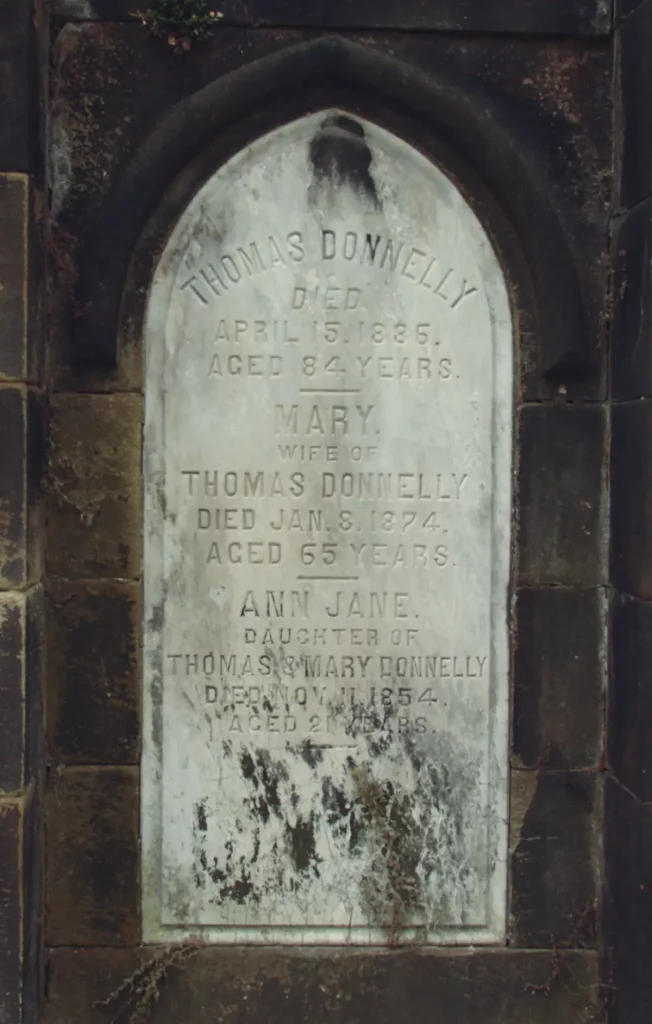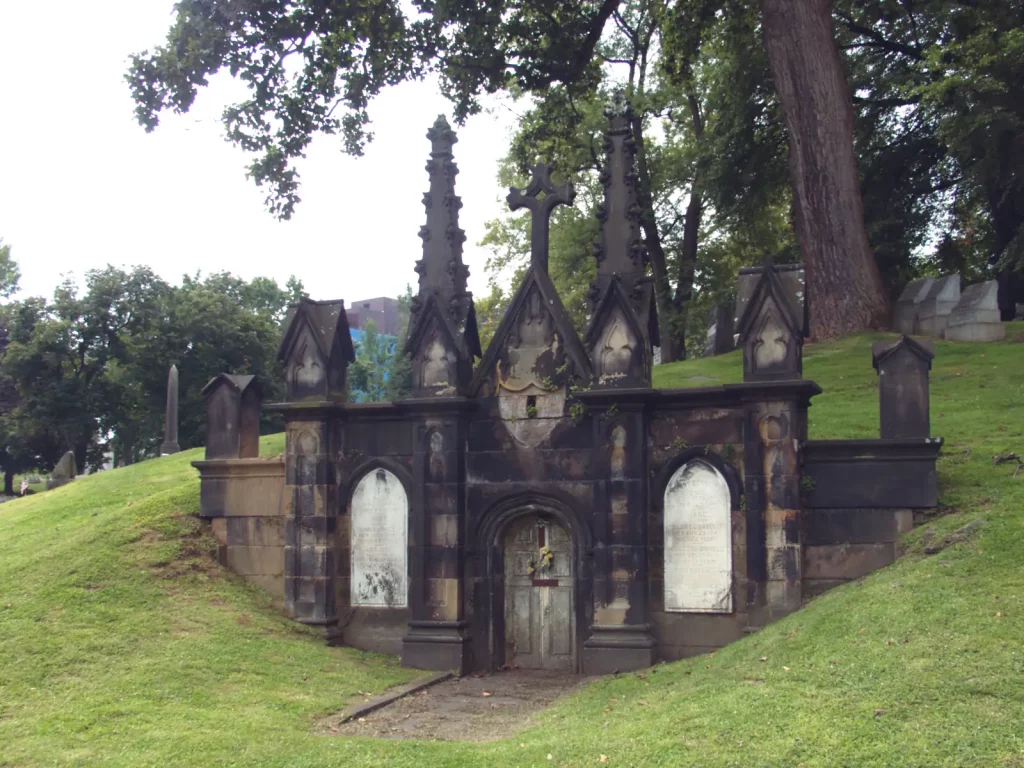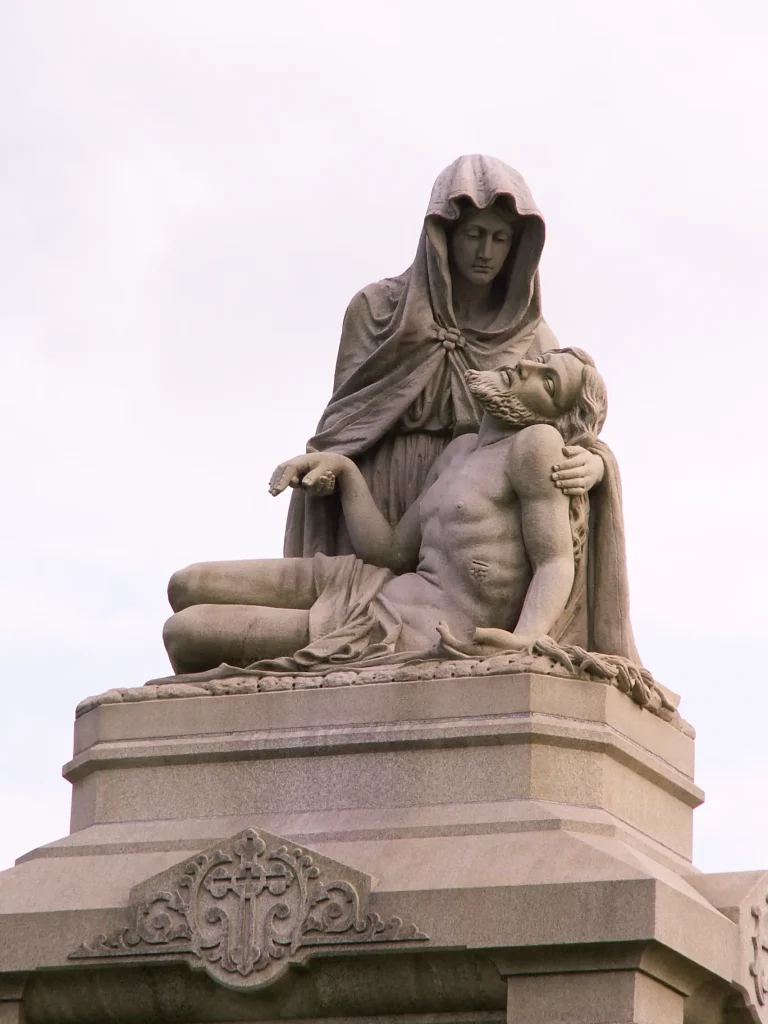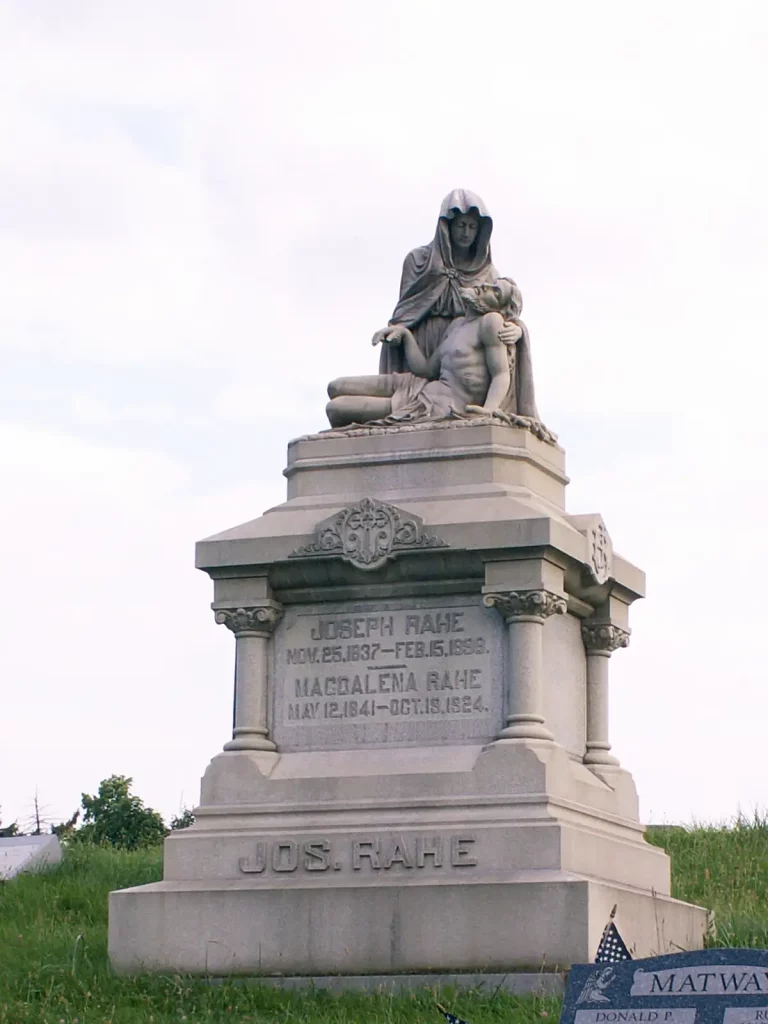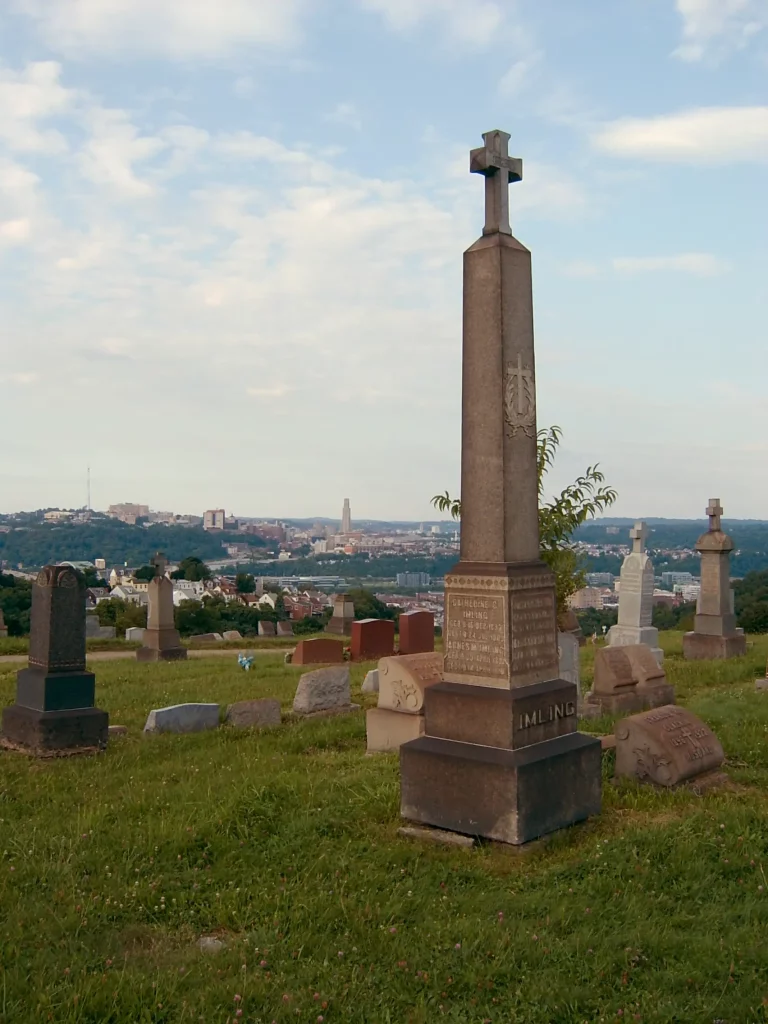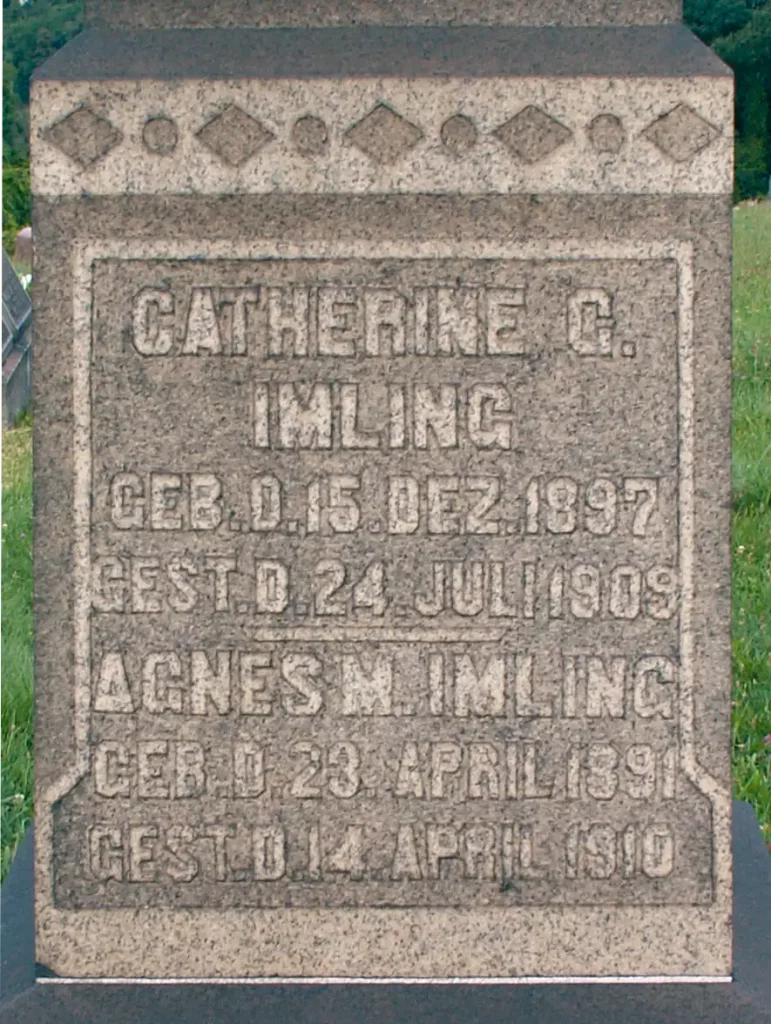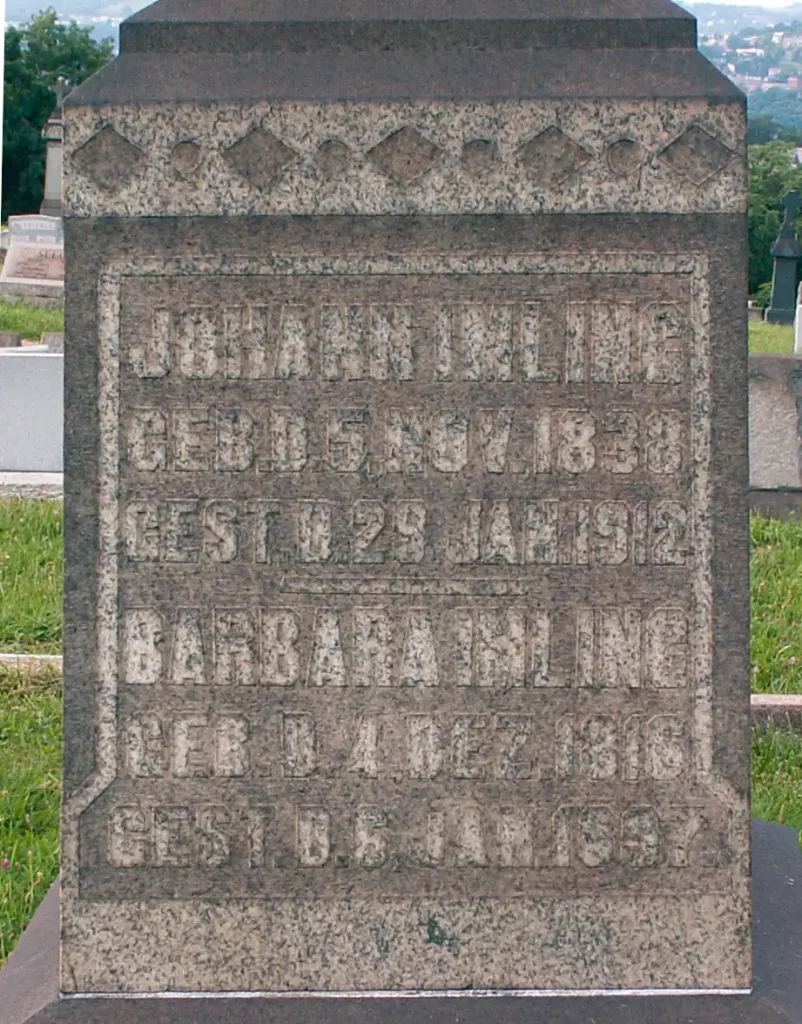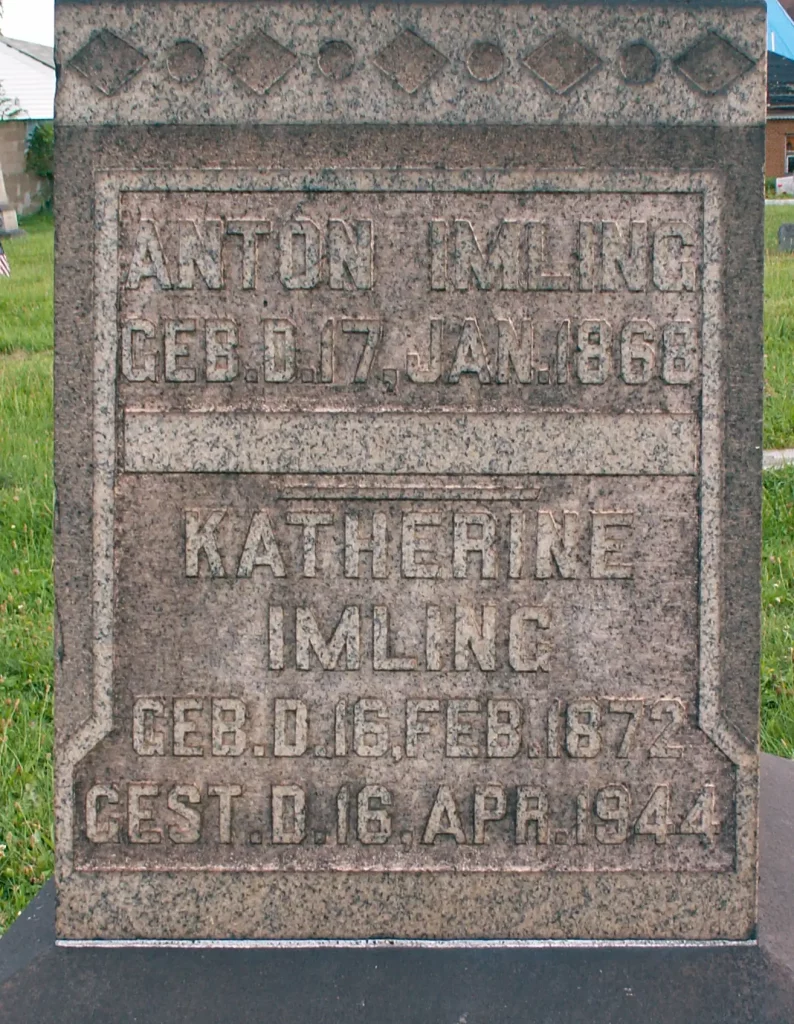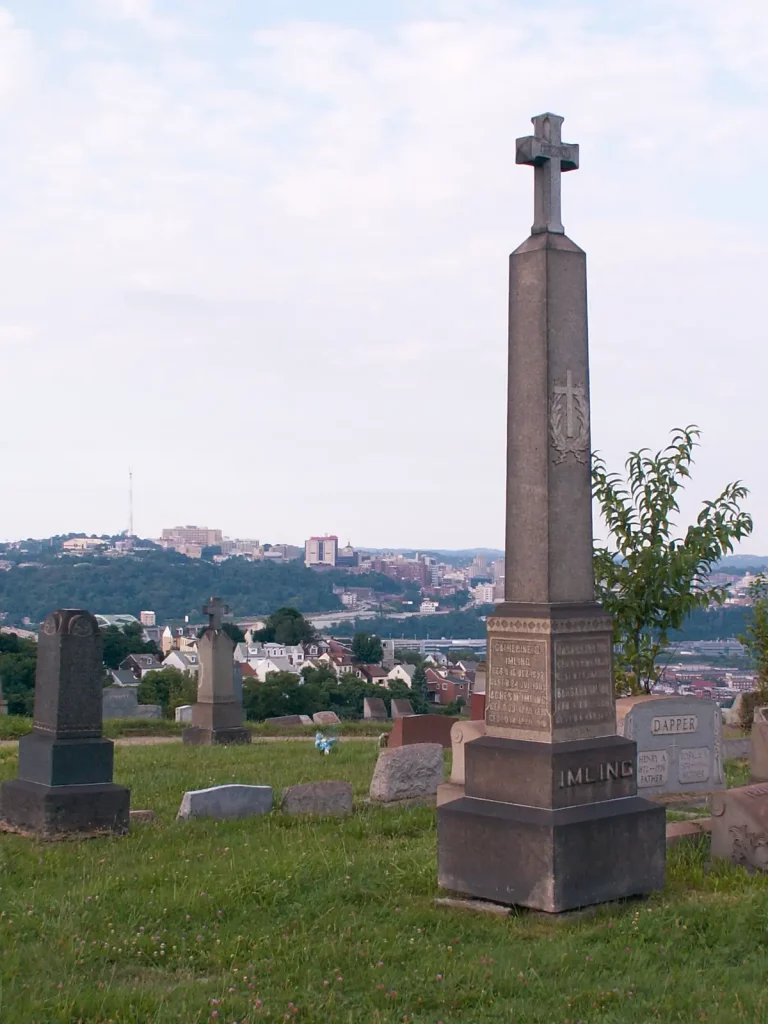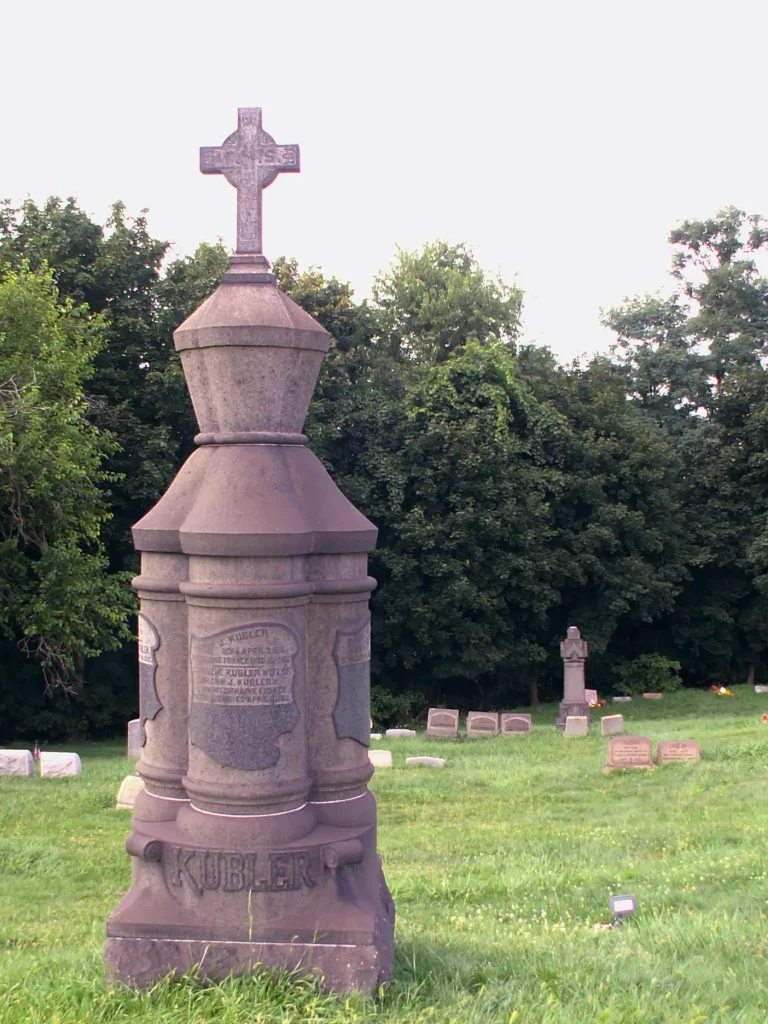

Almost all the monuments in St. Michael’s Cemetery are standard items from monument catalogues. (A century or so ago, you could even order cemetery monuments from Sears Roebuck, the way you ordered everything else from Sears.) This one is almost certainly a standard item, too, but it is a very unusual one, probably one of the more expensive monuments in the cemetery. The curving text of the inscriptions is a distinctive touch. There is space for a good many more inscriptions than were ever cut. The Kublers were born in “Lorraine, France”—an interesting distinction that is a little hard to interpret. When the Kublers were born, all of Lorraine belonged to France, but when they died a large part of it belonged to the German Empire, the fruit of the disastrous (for France) Franco-Prussian War.
Some of the pictures here were taken in 2014, and the rest in 2022. We also have some more recent pictures of the Kubler monument.

